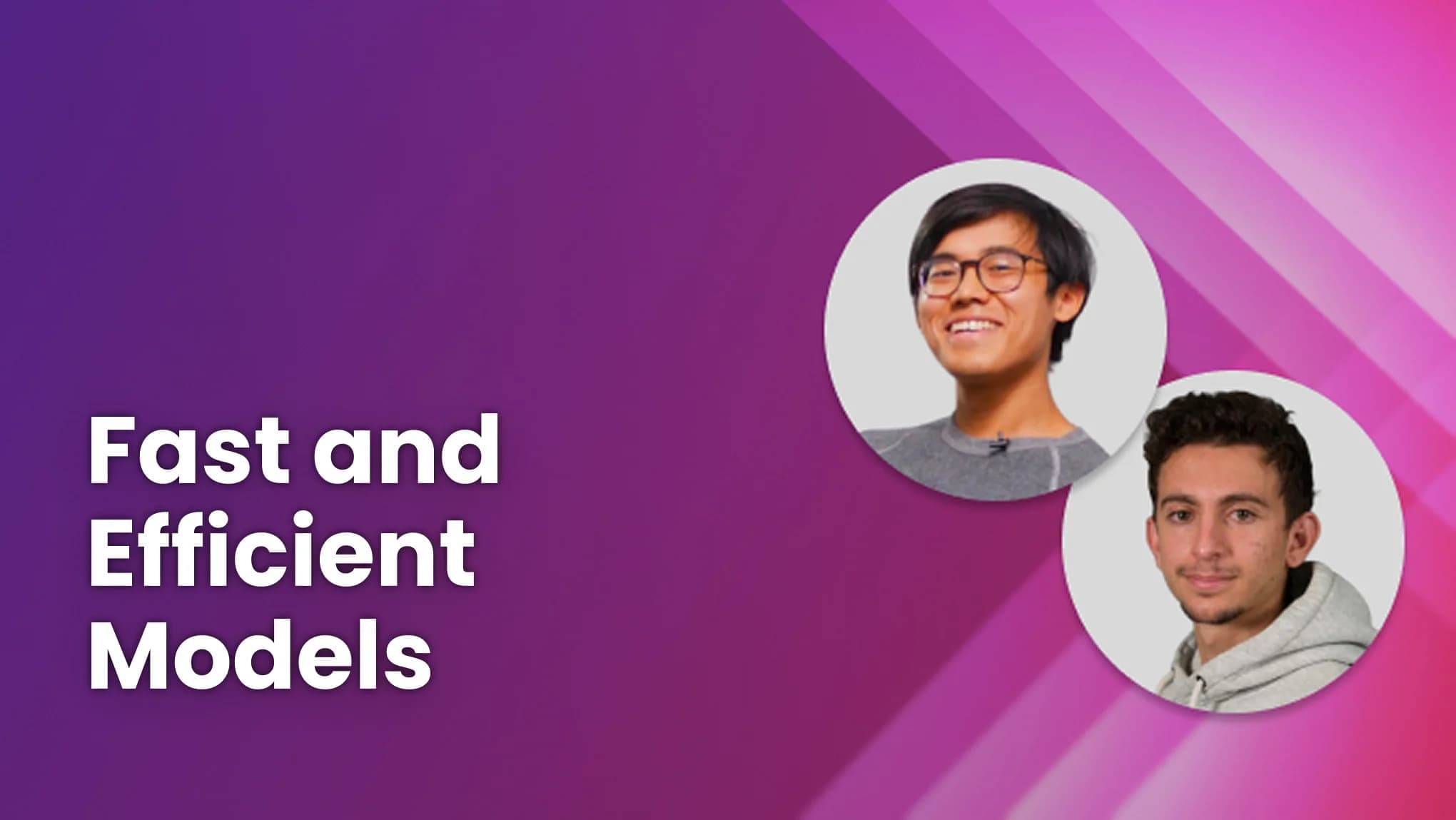Quantization in Depth
Instructors: Marc Sun, Younes Belkada

- Intermediate
- 2 Hours 10 Minutes
- 18 Video Lessons
- 13 Code Examples
- Instructors: Marc Sun, Younes Belkada
What you'll learn
Try out different variants of Linear Quantization, including symmetric vs. asymmetric mode, and different granularities like per tensor, per channel, and per group quantization.
Build a general-purpose quantizer in Pytorch that can quantize the dense layers of any open source model for up to 4x compression on dense layers.
Implement weights packing to pack four 2-bit weights into a single 8-bit integer.
About this course
In Quantization in Depth you will build model quantization methods to shrink model weights to ¼ their original size, and apply methods to maintain the compressed model’s performance. Your ability to quantize your models can make them more accessible, and also faster at inference time.
Implement and customize linear quantization from scratch so that you can study the tradeoff between space and performance, and then build a general-purpose quantizer in PyTorch that can quantize any open source model. You’ll implement techniques to compress model weights from 32 bits to 8 bits and even 2 bits.
Join this course to:
- Build and customize linear quantization functions, choosing between two “modes”: asymmetric and symmetric; and three granularities: per-tensor, per-channel, and per-group quantization.
- Measure the quantization error of each of these options as you balance the performance and space tradeoffs for each option.
- Build your own quantizer in PyTorch, to quantize any open source model’s dense layers from 32 bits to 8 bits.
- Go beyond 8 bits, and pack four 2-bit weights into one 8-bit integer.
Quantization in Depth lets you build and customize your own linear quantizer from scratch, going beyond standard open source libraries such as PyTorch and Quanto, which are covered in the short course Quantization Fundamentals, also by Hugging Face.
This course gives you the foundation to study more advanced quantization methods, some of which are recommended at the end of the course.
Who should join?
Building on the concepts introduced in Quantization Fundamentals with Hugging Face, this course will help deepen your understanding of linear quantization methods. If you’re looking to go further into quantization, this course is the perfect next step.
Course Outline
18 Lessons・13 Code ExamplesIntroduction
Video・4 mins
Overview
Video・3 mins
Quantize and De-quantize a Tensor
Video with code examples・11 mins
Get the Scale and Zero Point
Video with code examples・12 mins
Symmetric vs Asymmetric Mode
Video with code examples・7 mins
Finer Granularity for more Precision
Video with code examples・2 mins
Per Channel Quantization
Video with code examples・11 mins
Per Group Quantization
Video with code examples・7 mins
Quantizing Weights & Activations for Inference
Video with code examples・3 mins
Custom Build an 8-Bit Quantizer
Video with code examples・13 mins
Replace PyTorch layers with Quantized Layers
Video with code examples・5 mins
Quantize any Open Source PyTorch Model
Video with code examples・8 mins
Load your Quantized Weights from HuggingFace Hub
Video with code examples・7 mins
Weights Packing
Video・5 mins
Packing 2-bit Weights
Video with code examples・8 mins
Unpacking 2-Bit Weights
Video with code examples・8 mins
Beyond Linear Quantization
Video・7 mins
Conclusion
Video・1 min
Quiz
Reading・1 min
Instructors
Quantization in Depth
- Intermediate
- 2 Hours 10 Minutes
- 18 Video Lessons
- 13 Code Examples
- Instructors: Marc Sun, Younes Belkada
Course access is free for a limited time during the DeepLearning.AI learning platform beta!
Want to learn more about Generative AI?
Keep learning with updates on curated AI news, courses, and events, as well as Andrew’s thoughts from DeepLearning.AI!


